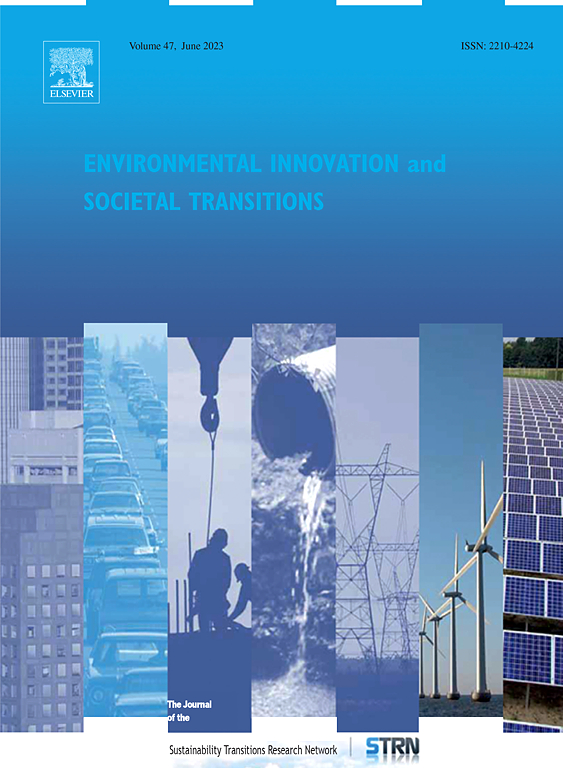资源星座和制度逻辑塑造了有机种子生态位创新系统的网络结构
IF 5.7
2区 经济学
Q1 ENVIRONMENTAL SCIENCES
Environmental Innovation and Societal Transitions
Pub Date : 2025-02-06
DOI:10.1016/j.eist.2025.100965
引用次数: 0
摘要
创新系统是相互关联的,参与者之间形成联系以增强系统功能。是什么推动了这些联系?系统构建的资源基础理论认为,参与者追求基于资源可用性和分配的关系。网络理论补充说,社会过程因创新系统功能而异,影响配置和行动者参与。本研究以美国有机种子生态位为例,将种子创新系统作为四个功能网络进行运作。分析表明,所有的功能网络都是由“伙伴模式”结构形成的,这表明合作关系是在资源可用和分布的情况下形成的,不同功能之间存在一定的差异。机构隶属关系也会影响行为主体对特定创新系统功能的参与,但在非营利行为主体和营利性行为主体之间存在差异。本研究通过实证检验和网络分析对现有理论的扩展来推进可持续性转型,为创新系统的形成提供可概括的见解。本文章由计算机程序翻译,如有差异,请以英文原文为准。
Resource constellations and institutional logics shape network structures of the organic seed niche innovation system
Innovation systems are relational, with actors forming connections to enhance system functions. What drives these connections? The resource-based theory of system building suggests actors pursue relationships based on resource availability and distribution. Network theory adds that social processes vary across innovation system functions, affecting configurations and actor involvement. This study examines these ideas using the case of the US organic seed niche, operationalizing the seed innovation system as four functional networks. The analysis shows that all the functional networks are shaped by “partner mode” structures, suggesting that cooperative relationships form when resources are available and distributed, with some variation across functions. Institutional affiliations also affect actors' involvement in specific innovation system functions, with differences between non-profit and for-profit actors. This research advances sustainability transitions by empirically testing and extending existing theories with network analysis, offering generalizable insights into innovation system formation.
求助全文
通过发布文献求助,成功后即可免费获取论文全文。
去求助
来源期刊

Environmental Innovation and Societal Transitions
Energy-Renewable Energy, Sustainability and the Environment
CiteScore
13.60
自引率
19.40%
发文量
90
审稿时长
56 days
期刊介绍:
Environmental Innovation and Societal Transitions serves as a platform for reporting studies on innovations and socio-economic transitions aimed at fostering an environmentally sustainable economy, thereby addressing structural resource scarcity and environmental challenges, particularly those associated with fossil energy use and climate change. The journal focuses on various forms of innovation, including technological, organizational, economic, institutional, and political, as well as economy-wide and sectoral changes in areas such as energy, transport, agriculture, and water management. It endeavors to tackle complex questions concerning social, economic, behavioral-psychological, and political barriers and opportunities, along with their intricate interactions. With a multidisciplinary approach and methodological openness, the journal welcomes contributions from a wide array of disciplines within the social, environmental, and innovation sciences.
 求助内容:
求助内容: 应助结果提醒方式:
应助结果提醒方式:


